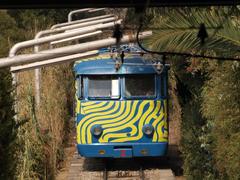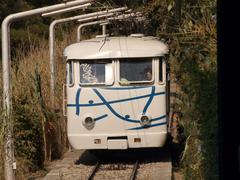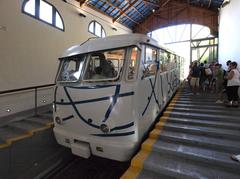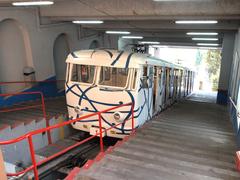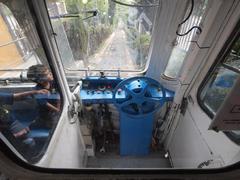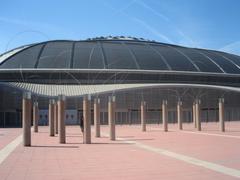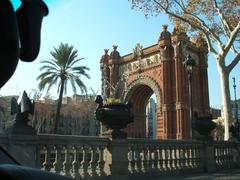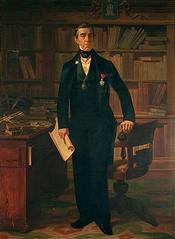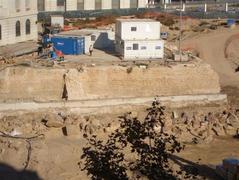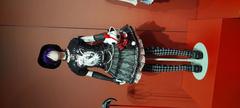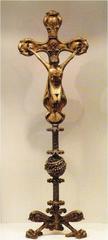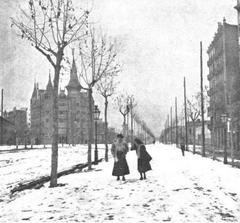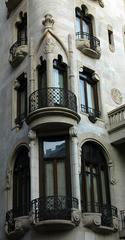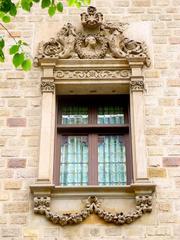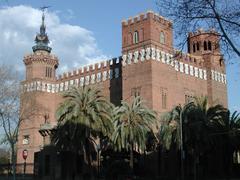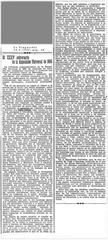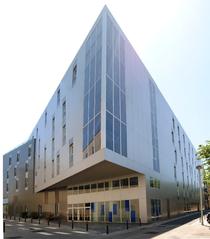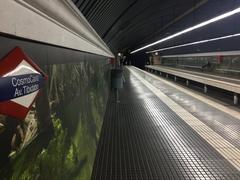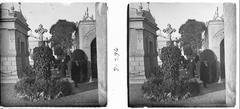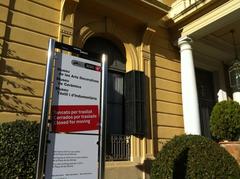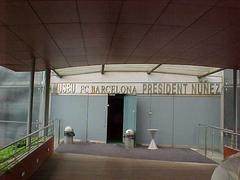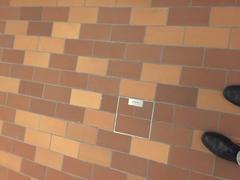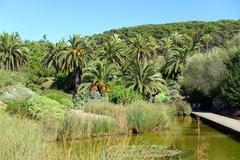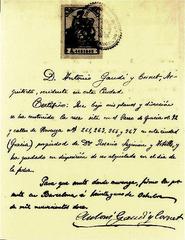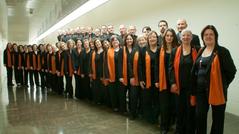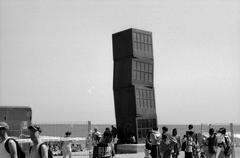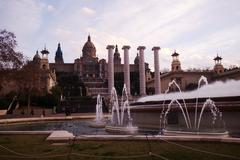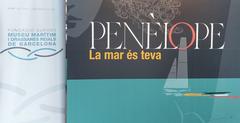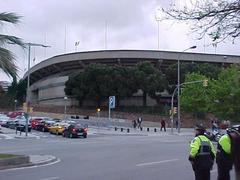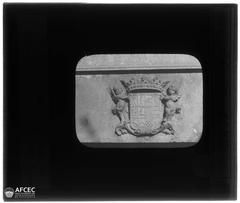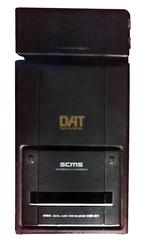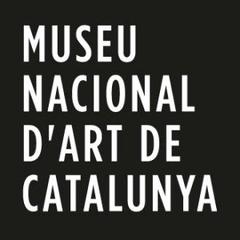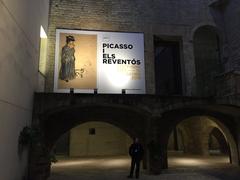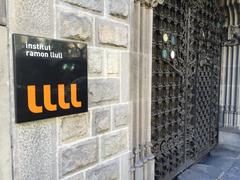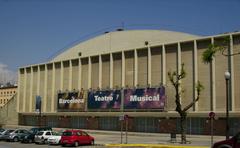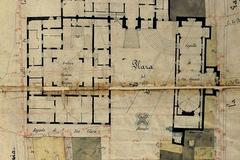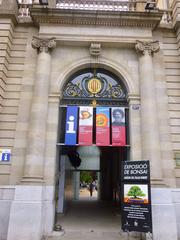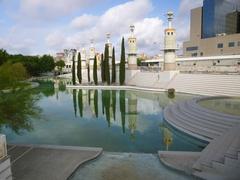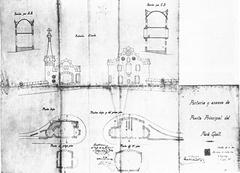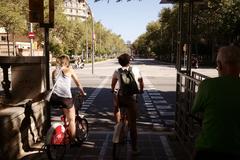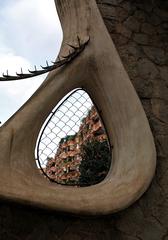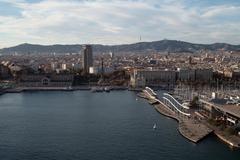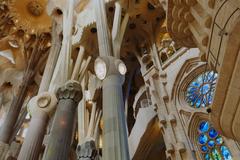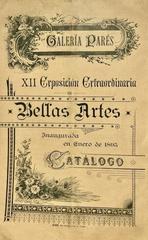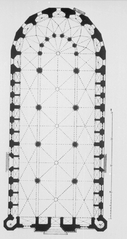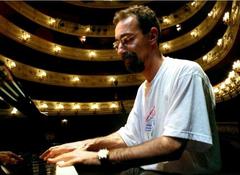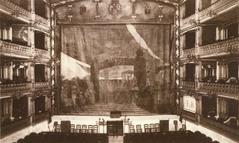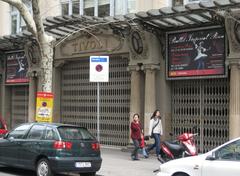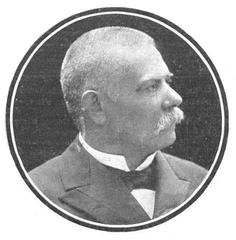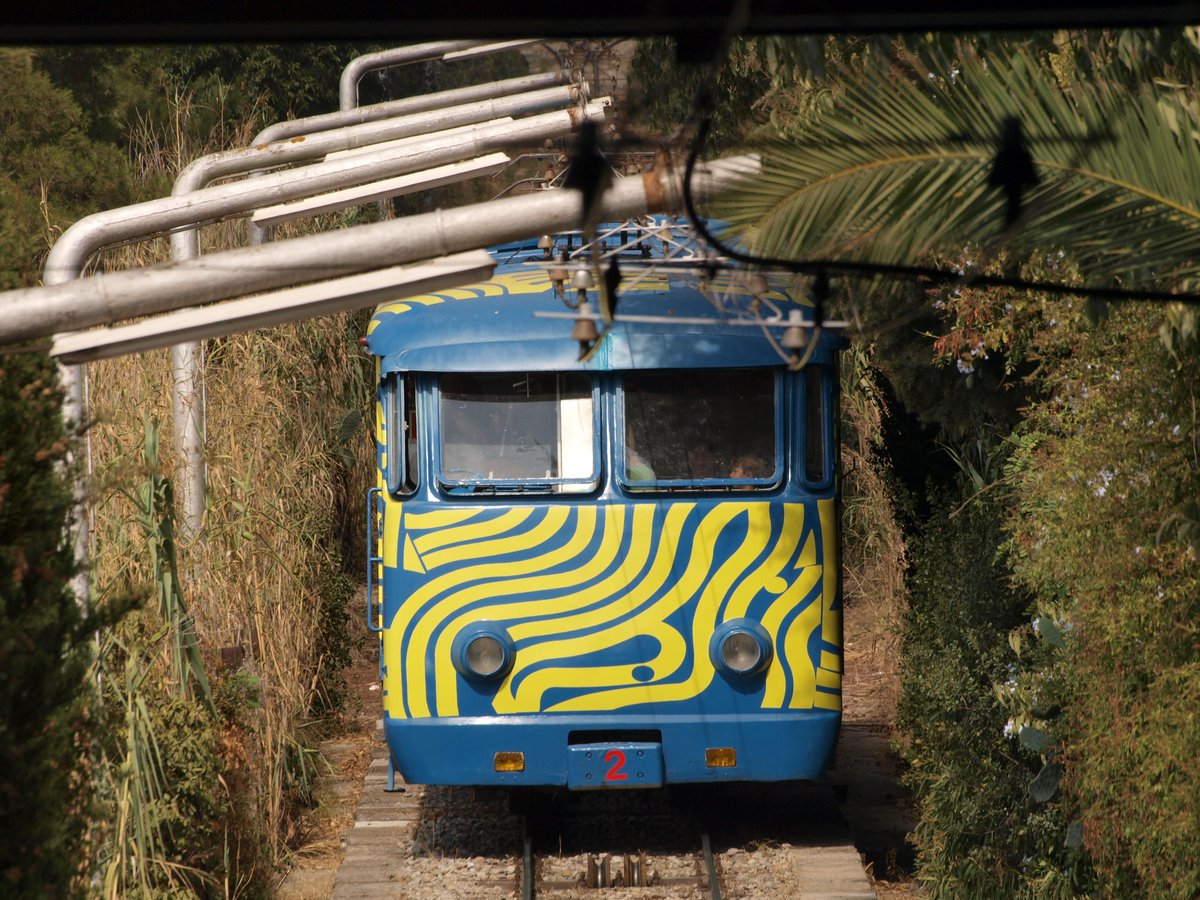
Funicular do Tibidabo: Visiting Hours, Tickets, and Travel Tips
Date: 18/07/2024
Introduction
The Funicular do Tibidabo, located in Barcelona, Spain, is a historic mode of transportation that has become a symbol of the city’s innovative spirit and rich cultural heritage. Inaugurated on October 29, 1901, this funicular railway is one of the oldest in the world and serves as a vital link to the Tibidabo mountain area, home to the Tibidabo Amusement Park and the Temple of the Sacred Heart of Jesus (Tibidabo Funicular History). Spearheaded by Dr. Salvador Andreu, the funicular was originally powered by a steam engine before transitioning to electric power in 1922 (Engineering of Funiculars). The funicular has undergone several upgrades over the years, with the most recent modernization completed in 2021 to mark its 120th anniversary. This included the installation of state-of-the-art cars and a fully automated control system (Tibidabo Funicular History). A ride on the Funicular do Tibidabo offers a memorable journey through time and space, providing panoramic views of Barcelona and access to some of the city’s most beloved attractions (Cultural Events at Tibidabo).
Table of Contents
- Introduction
- History of Funicular do Tibidabo
- Cultural and Historical Significance
- Visitor Information
- Nearby Attractions
- Visitor Experience
- Practical Tips for Tourists
- Safety and Etiquette
- FAQ
- Conclusion
History of Funicular do Tibidabo
Early Beginnings
The Funicular do Tibidabo was inaugurated on October 29, 1901, marking a significant milestone in the development of urban transportation in Barcelona. Conceived as part of a broader plan to develop the Tibidabo mountain area, the project included the construction of the Tibidabo Amusement Park and the Temple of the Sacred Heart of Jesus. Spearheaded by Dr. Salvador Andreu, the funicular aimed to provide a leisure destination for Barcelona’s residents.
Construction and Early Operations
The construction of the Funicular do Tibidabo was a remarkable engineering feat for its time. The line stretches approximately 1,152 meters (3,780 feet) with a vertical rise of 275 meters (902 feet). The gradient of the track varies, with the steepest section reaching an incline of 25.7%. The original funicular cars were wooden and could accommodate up to 80 passengers. Initially powered by a steam engine, the funicular transitioned to electric power in 1922 to improve efficiency and reduce operational costs.
Mid-20th Century Developments
Throughout the mid-20th century, the Funicular do Tibidabo underwent several upgrades to keep up with technological advancements and increasing passenger demand. In 1958, the original wooden cars were replaced with more modern, metal-bodied cars, enhancing safety and comfort for passengers. The track and infrastructure were also periodically maintained and upgraded to ensure reliability and safety.
Modernization and Recent Upgrades
In recent years, the Funicular do Tibidabo has seen significant modernization efforts. In 2019, the funicular was temporarily closed for a major renovation project aimed at modernizing the system and improving the overall passenger experience. The renovation included the installation of new, state-of-the-art funicular cars with increased capacity and accessibility features, such as wheelchair ramps and space for bicycles. The track and infrastructure were also upgraded to meet modern safety standards, and a fully automated control system was implemented. The modernization project was completed in 2021, coinciding with the funicular’s 120th anniversary.
Cultural and Historical Significance
The Funicular do Tibidabo holds a special place in the hearts of Barcelona’s residents and visitors. It is not only a vital transportation link to the Tibidabo mountain but also a cherished historical landmark. The funicular has been featured in various cultural works, including films, literature, and art, symbolizing the city’s rich history and innovative spirit. The Tibidabo Amusement Park, one of the oldest in the world, and the Temple of the Sacred Heart of Jesus further enhance the funicular’s cultural and historical significance.
Visitor Information
Visiting Hours
The Funicular do Tibidabo operates daily, with typical hours from 10:00 AM to 8:00 PM. However, it is advisable to check the official website for any changes or special schedules.
Ticket Prices
Visitors can purchase tickets at the lower station near Avinguda del Tibidabo. The ticket price includes access to the Tibidabo Amusement Park. As of the latest update, adult tickets are priced at €12, children (under 12) at €7, and seniors (over 65) at €10.
How to Get There
The lower station of the Funicular do Tibidabo is easily accessible via public transportation. Take the L7 line of the Barcelona Metro to the Avinguda del Tibidabo station and then transfer to the historic Tramvia Blau, which takes you directly to the funicular’s lower station.
Accessibility
The Funicular do Tibidabo has been modernized to include accessibility features such as wheelchair ramps and designated spaces for bicycles, ensuring that all visitors, including those with mobility challenges, can enjoy the ride and the attractions at Tibidabo.
Nearby Attractions
In addition to the Tibidabo Amusement Park and the Temple of the Sacred Heart of Jesus, visitors can explore nearby attractions such as the Collserola Natural Park, which offers numerous hiking trails and scenic viewpoints. The CosmoCaixa Science Museum is also a short distance away, providing an educational and interactive experience for all ages.
Visitor Experience
Riding the Funicular do Tibidabo is a unique experience that combines history, culture, and breathtaking views. The journey begins at the lower station, where visitors can learn about the funicular’s history through informative displays. The ride itself lasts about seven minutes, offering stunning vistas of Barcelona and the Mediterranean Sea. At the summit, visitors can explore the Tibidabo Amusement Park, the Temple of the Sacred Heart of Jesus, and various hiking trails.
Practical Tips for Tourists
Timing
The funicular operates from 10:00 AM to 8:00 PM, with extended hours on weekends. Visit early in the morning or late in the afternoon to avoid crowds.
Tickets
Purchase tickets online to save time. Combo tickets that include access to the amusement park and other attractions offer better value.
Accessibility
The funicular is wheelchair accessible, and assistance is available for those with mobility issues.
Weather
Check the weather forecast before your visit. The funicular operates in most weather conditions, but extreme weather may cause temporary closures.
Photography
Bring a camera to capture the stunning views during the ride. The best photo opportunities are on the left side of the carriage when ascending.
Safety and Etiquette
While the area is generally safe, it is wise to stay aware of your surroundings and keep an eye on your belongings, especially in crowded areas. Follow all posted safety instructions, particularly when using the funicular and amusement park rides. Dispose of trash properly, stay on marked trails, and avoid disturbing wildlife.
FAQ
Q: What are the visiting hours for the Funicular do Tibidabo? A: The Funicular do Tibidabo typically operates from 10:00 AM to 8:00 PM daily. However, it is advisable to check the official website for any changes or special schedules.
Q: How much do tickets cost for the Funicular do Tibidabo? A: Adult tickets are priced at €12, children (under 12) at €7, and seniors (over 65) at €10. The ticket price includes access to the Tibidabo Amusement Park.
Q: Is the Funicular do Tibidabo accessible for wheelchair users? A: Yes, the funicular has been modernized to include accessibility features such as wheelchair ramps and designated spaces for bicycles.
Q: How long does the funicular ride take? A: The ride lasts about seven minutes, offering stunning vistas of Barcelona and the Mediterranean Sea.
Conclusion
The Funicular do Tibidabo is a historical, cultural, and economic asset to Barcelona. Its significance extends beyond its functional role, embodying the city’s rich heritage and commitment to sustainable tourism. A ride on the funicular offers a memorable experience, combining the charm of early 20th-century engineering with the beauty of Barcelona’s natural landscape. For visitors, it is an essential part of the Tibidabo experience, providing a unique and enriching journey to one of the city’s most iconic destinations.
References
- Tibidabo Funicular History, 2024, Tibidabo Official Website (source)
- Engineering of Funiculars, 2024, Railway Technology (source)
- Cultural Events at Tibidabo, 2024, Barcelona Official Website (source)
- Economic Impact of Tourism, 2024, Tourism Review (source)
- Sustainable Tourism in Barcelona, 2024, Barcelona Official Website (source)
